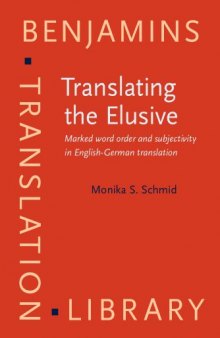 جزییات کتاب
جزییات کتاب
This work presents an in-depth analysis of text- and speaker-based meaning of non-canonical word order in English and ways to preserve this in English-German translation. Among the sentence structures under discussion are subject-verb inversion, Left Dislocation, Topicalization as well as wh-cleft and it -cleft sentences. Various approaches to the description and analysis of the meaning potential of these structures are presented and discussed, among them theories of grammaticalization, subjectivity, empathy and information structure.English as a rigid word order language has quite different means of creating meaning by syntactic variation than a free word order language like German. Contrastive analyses of English and German have emphasized structural differences due to the fact that English uses word order to encode the assignment of grammatical roles, while in German this is achieved mainly by morphological means. For most ‘marked’ constructions in English a corresponding, structure-preserving translation does not lead to an ungrammatical or unacceptable German sentence. The temptation for the translator to preserve these structures is therefore great. A case study discusses more than 200 example sentences drawn from recent works of US-American fiction and offers possible strategies for their translation.



 دانلود کتاب
دانلود کتاب

 جزییات کتاب
جزییات کتاب





 این کتاب رو مطالعه کردید؟ نظر شما چیست؟
این کتاب رو مطالعه کردید؟ نظر شما چیست؟
